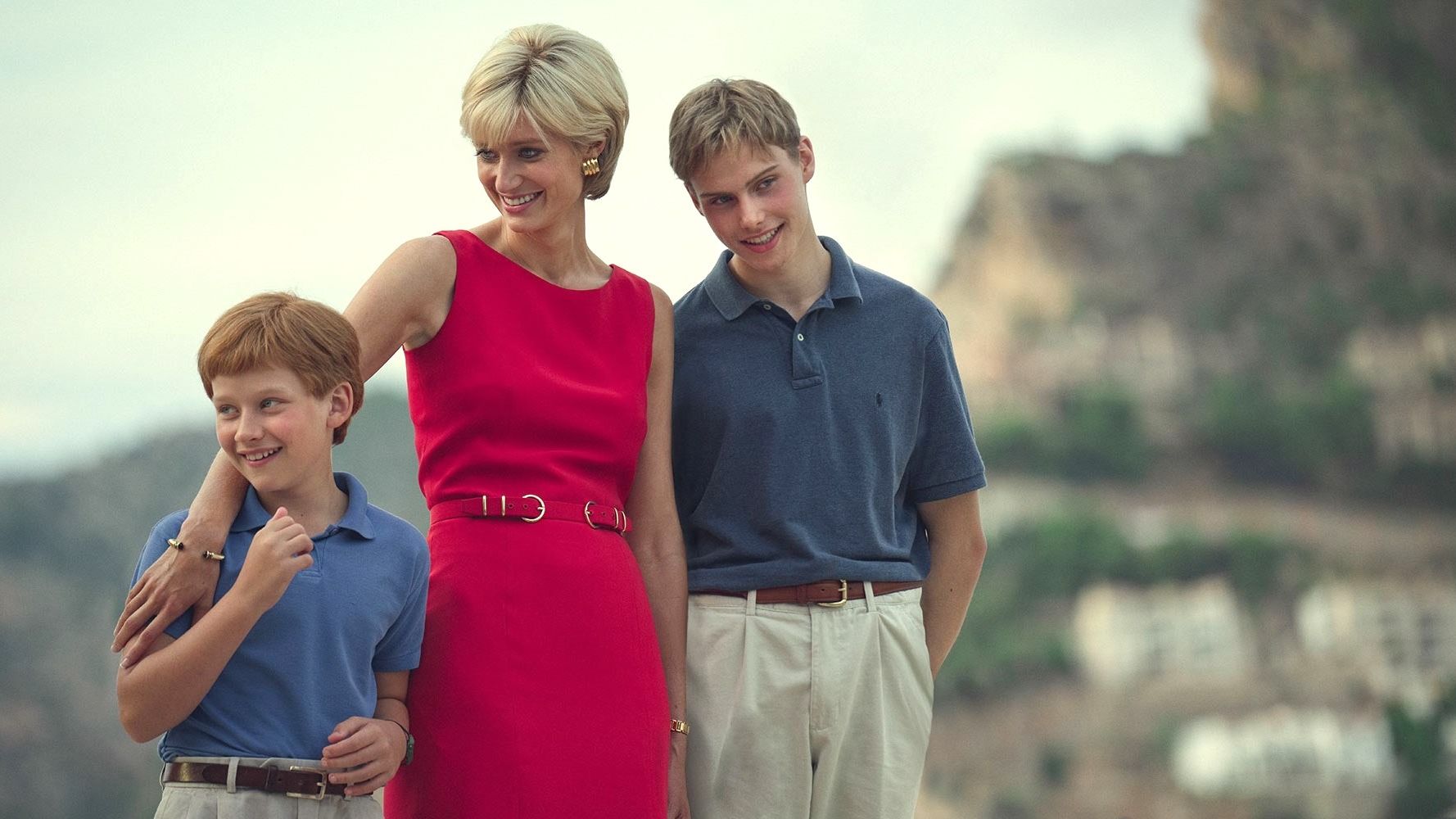The first part of the highly-anticipated final season of “The Crown” dropped on Nov. 16 on Netflix last week. Focused on the late Queen Elizabeth II and the events that shaped her reign, these four episodes follow a newly divorced Princess Diana — played convincingly by Elizabeth Debicki — as she navigates the paparazzi, her new life as an “ex-royal” and single mother and her early death in the summer of 1997. Though Peter Morgan, director and creator of the series, certainly takes creative liberties with this part of the British royal family’s history, part one of season six captures this difficult moment with care and sensitivity.
“The Crown” appropriately depicts Princess Diana’s death by utilizing different perspectives and story devices. The first episode begins with a man walking his dog late at night when he sees the car carrying Diana and her boyfriend, Dodi Fayed, speed and crash in the Pont de l’Alma tunnel in Paris. Rather than sensationalizing the crash with speeding cars and the destroyed Mercedes-Benz, “The Crown” treats Diana’s death respectfully. The artistic decision by Morgan to begin part one with the tragic car crash immediately draws audiences in and frames the four episodes’ storyline and purpose: to explain the events and choices that lead to Diana’s death.
Additionally, part one shows Diana’s growing isolation due to the press’ harassment. The second episode of “The Crown” contrasts the story of Italian photographer, Mario Brenna, who captured the $3 million photo of Diana and Dodi embracing on a yacht, and the royal photographer, Duncan Muir, who took staged photos of Prince Charles and his sons, Princes William and Harry, in Scotland. The stark difference between the behavior of the loyal royal family photographers and the tabloid-hungry paparazzi underscores the frenzy and chaos Diana lived under after leaving the protection of the Palace. Morgan’s unique approach to telling these unknown stories and using different perspectives about the royal family enriches the storytelling and is unlike any other depiction.
Part one also explores the complicated nature of Diana and Dodi’s relationship. Dodi Fayed (Khalid Abdalla), the eldest son of wealthy Egyptian businessman Mohamed Al-Fayed, is portrayed as a son who struggles to live up to his father’s expectations. He pursues a relationship with Diana as a way to please his father, earn his British citizenship and make his way into British upper society. Despite being paired together for selfish reasons, Dodi and Diana come to enjoy each other’s company as they share a unique kinship over their complex relationships with their fathers and feelings of loneliness. Though not confirmed, Morgan’s interpretation of Diana and Dodi’s relationship shifts away from the typical whirlwind romance storyline and instead allows viewers to learn more about the emotional connection between these two broken characters.
Perhaps the most surprising aspect of season six is Prince Charles’, now King Charles III, unexpected character transformation from a villainous cheating husband to the regretful ex-husband and assertive future monarch. Indeed, Charles begins season six throwing parties for Camilla Parker Bowles, his long-time love, and playing a publicity battle against Diana for the public’s favor. However, as part one progresses, Charles seeks to prioritize his sons and co-parent with Diana – “Even though we weren’t brilliant at being married, can we be brilliant at all of this?” This new side of Charles is especially apparent after Diana’s death when he breaks down upon seeing her dead body and pushes the Queen to release a statement showing “empathy” in response to the nation’s grief. The choice to depict Charles more humanely is an interesting redemption arc for a character most audiences have, until now, viewed as the “bad guy.”
However, there was controversy over the appearance of Diana’s “ghost” visiting Charles and the Queen. Many viewers do not believe Diana would “make peace” and comfort the royals after the way she was treated. Undoubtedly a risky technique and up for interpretation, Diana’s reappearance as a figment of the imagination can represent the universal feeling to anyone who has lost someone unexpectedly and wants to have one last conversation. Morgan’s decision to end Diana’s story by providing a sense of closure with her former husband and the Monarch further humanizes the royal family and closes her story. However, this part could have been better executed if certain lines in these conversions were cut or changed. For example, when the “ghost” of Diana says to Charles, “Thank you for how you were at the hospital. So raw, broken … and handsome. I’ll take that with me,” it rubs audiences the wrong way as Diana would likely never have said that to Charles.
Part two of season six will be released on Dec. 14 with a flashforward to Prince William meeting his future wife, Catherine Middleton, at St. Andrew’s College and Prince Charles finally marrying Camilla. Blending fact and fiction, “The Crown” does an impressive job of filling in the gaps in Diana’s story and showing the complexity of these characters. Hopefully, part two of season six will conclude “The Crown” on a high note.
Verdict: A difficult moment to capture, part one of season six of “The Crown” does an impressive job handling Diana’s story, making it worth the watch.








